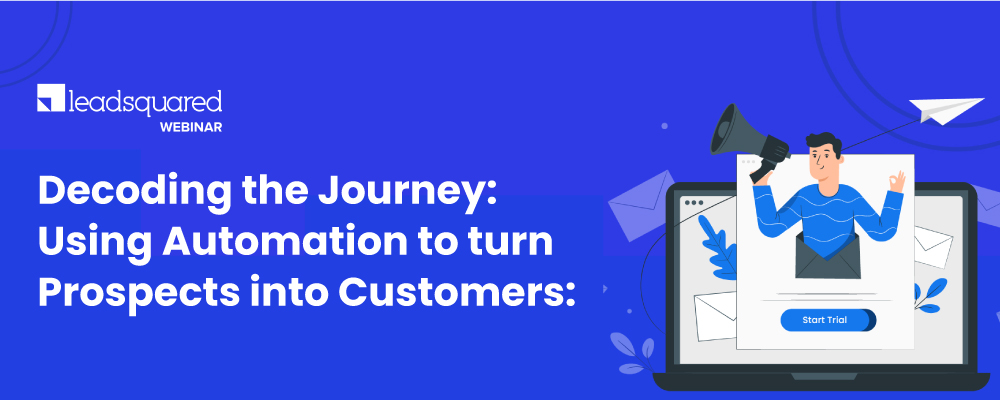Arnav Patel, Marketing Lead at TARS, and Rajat Arora, VP – Growth Marketing at LeadSquared talk about how Chatbot and CRM software integration can help you gain more customers.
The rise of marketplaces has brought a drastic change in buyers’ behaviours. Prospects are now more comfortable using digital markets than physical ones.
Adaption and experimentation have made this shift easier and worthwhile for the sales and marketing departments across industries.
The mission is to turn visitors into leads and then turn those prospects into potential customers. The conversion rate has drastically improved due to the adoption of different methods of digital sales and marketing.
Process and hurdles
Typically, a visitor who lands on a page becomes a lead in the CRM and then eventually after following up would convert into a paying customer. Continuous conversation is the key throughout this journey.
But is it that simple?
Not really.
No one like to give their contact information just like that. They should be able to see the value they get by sharing those details.
In other words, the visitor’s journey of becoming a lead and eventually a customer comprises of a lot of obstacles. Leads fall through the cracks, and the stages are more far away than anyone anticipates or expects them to be.
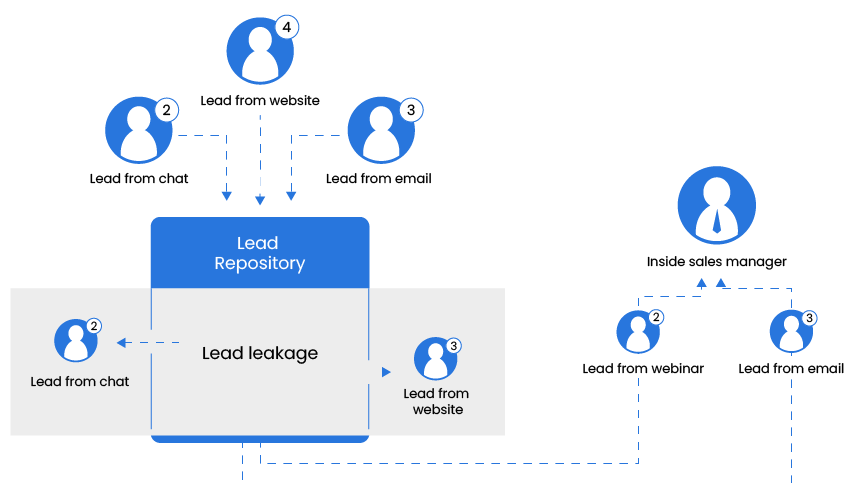
Solutions to avoid lead leakage
- The process must be optimized every day.
- Coordination and connection need to be established between sales and marketing department.
- Automation can plug those holes and give more than what one could get.
- Chatbots could be used to automate processes like conversation with customers.
The digital customer journey today
Pandemic triggered the rise of digital. Today, digital market has become a pre-eminent marketing and sales channel.
Earlier, to buy a product or a service, customers had to approach a physical store or call up a business and involve in some form of human interaction with a marketer or a salesperson.
Now, these interactions have become self-serve.
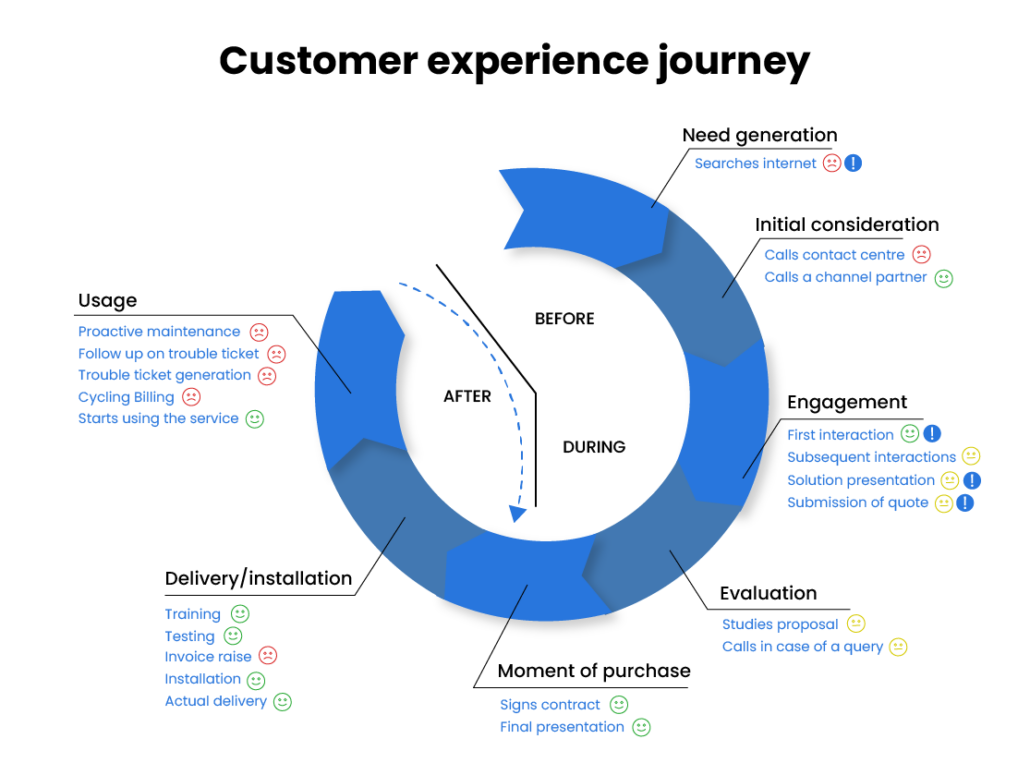
Conversations have turned into individual decisions. The marketer is no longer in the picture. Customer service has become synonymous to customer support.
The aftereffects of digitization
- Deep fatigue: The visitors who land on the websites lose their attention easily and drop. It mainly happens due to lack of human-to-human interaction.
- Competition: As competition increased, the conversion rates worsened.
- Money lost: Across industries, conversion rates average to 4.40%. The remaining 95.6%of the money spent on Google and Facebook ads doesn’t generally yield measurable results.
Solutions so far
The solutions marketers have found are:
- Shift back to the customer service mode
- Adopt click-to-call method where buyers can reach out to sales and service agents instantly
- Live chats on apps and webpages for immediate query resolution.
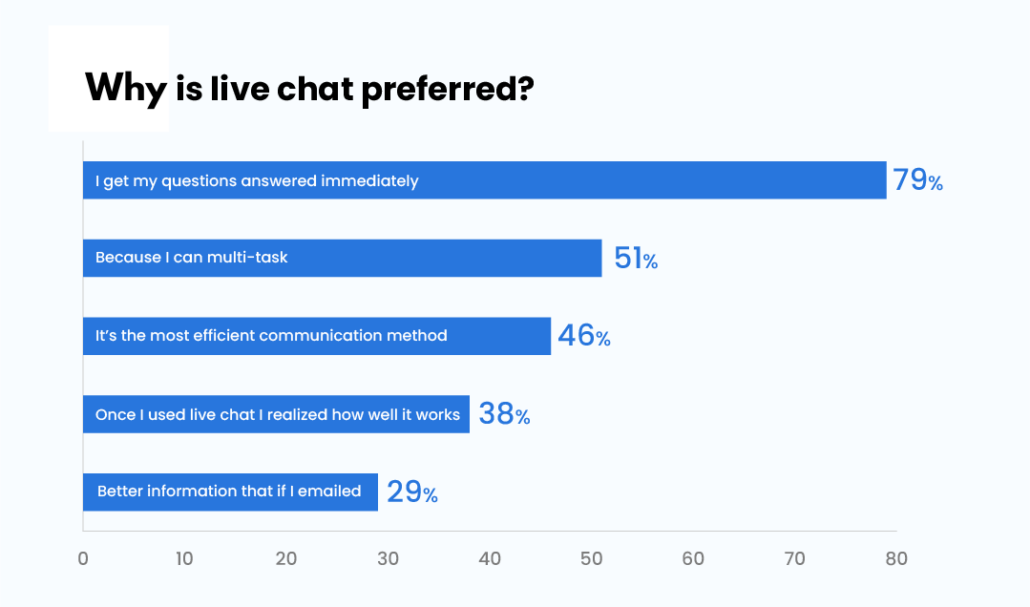
However, the question is, are these methods still valid in this dynamic world?
Let’s figure it out.
Drawbacks of live chat
- Poor user experience: 38% of consumers think the user experience is not good enough, and 43% of businesses agree.
- Capital: The additional payroll had to be allocated to hire the customer support and service agents to answer peoples’ queries.
- Overload: Even after bringing visitors to the page, wait times would increase because of the number of queries coming through, which would outstrip the number of agents.
- Time: Providing 24/7 live chat support and customer service in the context of marketing campaigns would be extremely difficult for most businesses. Agents would have to get hired based on shifts.
Instances of failures of live chat
If someone lands on the page after clicking on the Google ad, post normal working hours and choose to live chat for assistance, it will say, “Sorry, we’re not in the office right now. Reach back out to us in 12/14 hours.” Thus, losing a visitor through the cracks again.
Similarly, if someone lands on the webpage at peak time during the day, and there is a long wait time on that live chat, they could not have rendered the service, facing the same consequence.
Thankfully, we can automate conversations, at least the common queries, to a great extent via chatbots.
Chatbots, the alternative solution
Chatbots are the automated solutions for conversation between a brand and a customer. The sequence of questions and answers are defined in the system corresponding to customer queries. The mechanism to contact the support team is also there in case the customer has questions that can’t be answered by a chatbot.
By integrating chatbots with your CRM software, you can provide exceptional experience to your buyers.
Let’s look at this aspect in detail.
Stage 1 – visitor to lead in CRM via chatbot
Even though chatbots excel in instant response, they are not created for answering complex queries. People tend to overpromise with Chatbots. They tend to think of Chatbots as the ultimate sales rep.
Chatbots are very good at answering basic L0 and L1 queries. For example:
- What’s your pricing?
- What are your hours of operation?
- Can I book a demo with you guys?
- Can I book a consultation with you guys?
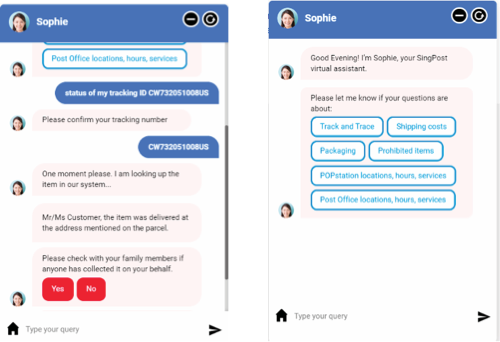
Chatbots can be used to answer basic queries, which account for around 40-70% of all the queries coming in through the door.
If visitors are interacting with Chatbots on a page, they are more likely to convert just because it is a conversation.
“When we asked marketers and salespeople from different industry verticals about how many of them use Chatbots in their landing web pages to handle basic queries, we found out that 36% of them use Chatbots already, while 51% don’t use this automation method, and 13% were not even aware about the same.”
Arnav Patel, Marketing Lead, TARS
Advantages of using chatbots
- Time: Chatbots are available 24/7, without having any fatigue or getting tired. Neither is it time bound to close services after working hours.
- Efficiency: Chatbots reduce the human workload as it handles 40-70% of the basic queries. This even keeps workplace organized enough without any worries about the lack of agents on different shifts.
- Sufficiency: One Chatbot can talk to almost infinite number of users at the same time. The visitors would not have any waiting time and the conversion would be quicker.
- Cost effective: It’s relatively cheap on a per conversation basis when compared to a human customer service agent.
- Sync with CRM: All the details collected in that conversation are immediately synced in real-time with the CRM.
“You must have heard about India’s largest network of audiology providers—Hearing Solutions. They’ve replaced their forms and their human customer service methods using Chatbots. They saw a 50% increase in their conversion rate when they added the Chatbots to their website.”
Arnav Patel, Marketing Lead, TARS
Stage 2 – prospect in CRM to customer
Except for customer support inquiries, queries you receive via chatbots are generally from prospective buyers.
Your sales team need to intervene, follow-up to convert them into paying customers.
But only if it was that easy.
As mentioned, the conversation rates may vary from 0.5 to 4% depending on the industry. You can improve this rate by finding the reasons why your leads are not converting into customers and fixing those gaps.
Reasons why leads are not converting into customers
- The salesperson isn’t interested in selling to that prospect anymore.
- There are disengaged leads and are not turning into paying customers.
- Mistakes made by sales team go unnoticed.
- Bad quality leads.
How can CRM automation plug those gaps?
- When marketers are generating leads, their work does not stop there. Those leads must be pushed down the sales funnel.
- The salespeople need to get intelligence on leads to cater their needs better and get one step ahead of their competitors.
- The lead volume and quality must be maintained to fulfil the target.
- Consumer behaviour research should be conducted.
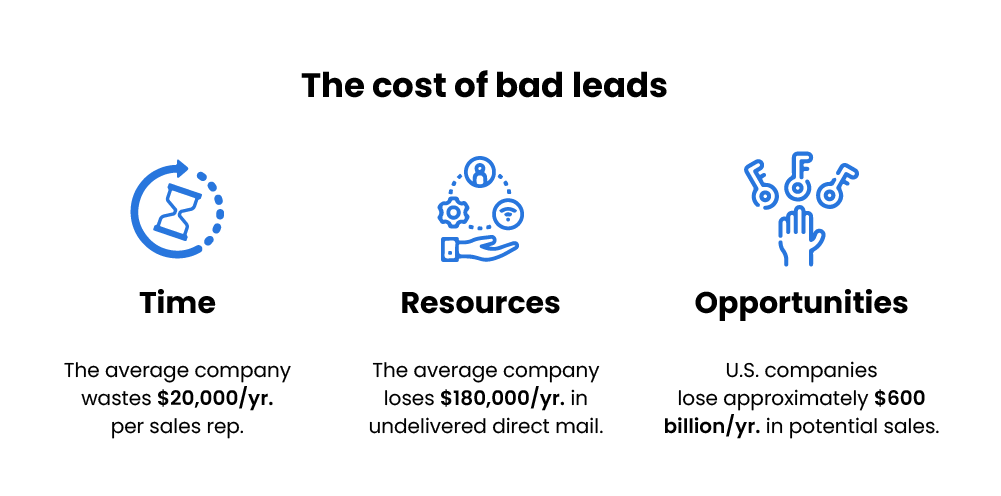
CRM software helps you achieve the above points.
In Sales, every lead captured is distributed among a relevant salesperson based on demographics. After that, the salesperson gets a notification to follow up on the lead within the next 30 minutes.
In case the salesperson is unable to follow up, even after multiple notifications, the manager will be notified after 4 hours. If the lead is not spoken to or catered properly in 24 hours, the manager gets in.
In this fast-moving world, you cannot afford to lose time or miss that sale. CRM software helps keep a check on follow-ups made on sales and marketing leads.
Some other ways in which CRM automation help are:
- Lead activity notification to the respective sales rep whenever a lead visits the pricing page, opens/clicks on the email link, calls you up, etc.
- Follow-up reminder notification to sales reps.
- Create drip campaigns for automated follow-ups, payment reminders, subscription renewal, etc.
- Trigger emails for abandoned carts, etc.
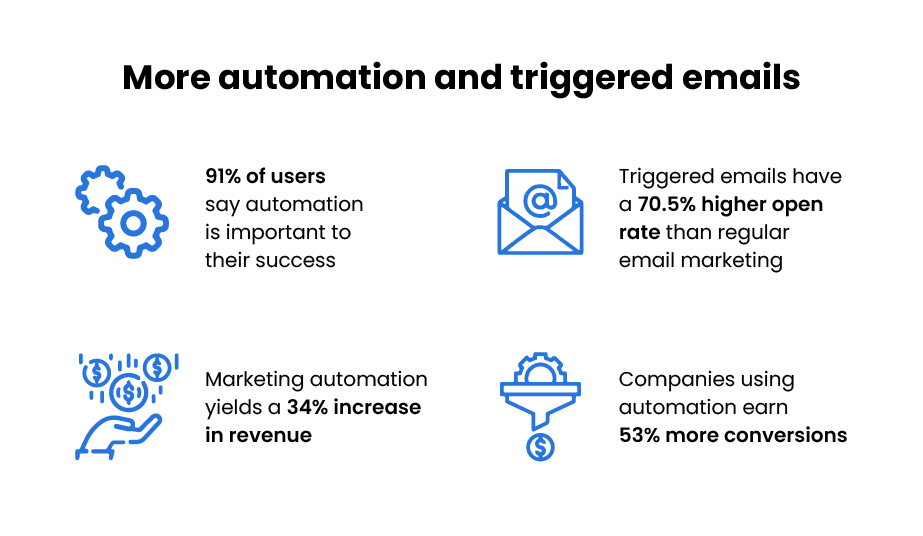
So, these are some of the many benefits of integrating a CRM with chatbots.
You can not only capture inquires but also create a complete workflow to convert those inquiries in customers.
LeadSquared is a fast-growing sales CRM software that seamlessly integrates with several chatbot solutions. For details, feel free to contact us.
Audience Questions
Are Chatbots that have prewritten questions or prompts efficient enough? How can this be made more accommodating for the dynamic queries, especially for smaller businesses that might not be able to have a human behind the screen to answer the question?
“Prewritten Chatbots are efficient enough. There is an option to start out with a prewritten Chatbot, where there are hard-coded buttons that people could use to ask questions and further move to an AI Chatbot. These can be created with an advanced model and dialogue flow integrated into the Chatbots.
In those pre-written questions, one may not be able to cover everyone’s questions. Those questions can be handed it off to a human agent.
A casual reply from the bot, apologising for not being able to understand would not please the visitor, but if it says, “That’s a bit of a tricky question, probably someone else from my team is better equipped to answer that. Let me connect you with them,” would be called failing gracefully, showing that the chatbot is very serious about the customer’s queries and knows exactly who can help them out with their discrepancies.”
Speakers

Arnav Patel
MARKETING LEAD, TARS
A digital marketing nerd, Arnav helps marketers get the most out of their marketing campaigns by creating content about CRO. He is a conversational design expert and has built over 60 chatbots to helps businesses boost their PPC conversion rates. He currently focuses on how conversational tech (chatbots and live chat) can be used to deliver best-in-class online customer service and convert site visitors into leads.

Rajat Arora
DIRECTOR – MARKETING & INSIDE SALES, LEADSQUARED
Rajat has 14 years of experience in design, art collection, marketing, and sales. As the Director of Marketing at LeadSquared, he brings a unique perspective to the function – practical strategies, cross-functional insights, without the fluff. In this webinar, Rajat will share the secrets to automating some absolutely necessary, but repetitive sales and marketing processes, allowing teams to focus on building great customer experiences instead.





